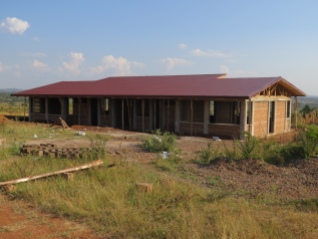It wasn’t long ago that sustainability was an uncommon term, but the need to use resources efficiently becomes clearer with each year that the global population increases, climate change advances, and we become more connected to each other through technology. Within this context, the concept of what is excess, a bi-product, or otherwise deemed unnecessary is shifting. Recycling, upcycling, and a variety of product streams illustrate this change within society. Within my own work, the idea of discovering value where it was previously unnoticed has become a core value extending into material and building reuse, access to capital, but most importantly partnering with and leveraging the skills of traditionally marginalized communities.
Carrying this ideology with me, I was honored to be selected as a participant in a non-governmental diplomacy exchange, the Junior Chamber International of Osaka’s Outstanding Young Persons (TOYP), that took me to Osaka and Tokyo during the first week of September. As a component of this cultural experience, I was interested to see what insights Japanese culture, so well-known for attention to detail and valuing beauty, might provide in regards to not just efficient, but excellent use of resources.
The TOYP program provided a wealth of opportunities to expand my network to include Japanese acquaintances (including a family who hosted me in their home and took me to visit Tadao Ando’s Church of Light) and fellow TOYP participants, visit important landmarks (such as the Osaka Castle and the Ikutama Shrine), and experience Japanese culture (through a formal tea ceremony, outstanding culinary experiences, and the art at the Kamigata Ukiyoe Museum). Perhaps most impressive, the JCI Osaka organized an audience for TOYP participants with Their Imperial Highnesses Crown Prince Naruhito and Crown Princess Masako, with whom we spoke about our projects and our motivations. Through each of these experiences Japanese culture and architecture exceeded my expectations; beauty and efficiency were visible throughout.
Despite this culture of excellence, Japan struggles with many of the same issues that we grap ple with in the United States including an affordable housing stock inadequate to meet demand, and persistent gender inequality in the workplace. Within the TOYP forum, where I presented my work as a social impact architect
ple with in the United States including an affordable housing stock inadequate to meet demand, and persistent gender inequality in the workplace. Within the TOYP forum, where I presented my work as a social impact architect
and builder, the focus was on how women can be more included in the work force. This issue is particularly pressing in Japan where parallel statistics: the declining national population[1] and the low participation rate of females in the labor force, are threatening future economic growth for the country. Within this context, the potential contributions of women in the business and economic sphere can no longer be overlooked in Japan. This resource has shifted from unnecessary to valuable.
As JCI Osaka makes strides toward accessing the resources of female employees and entrepreneurs, this is only one example of a shift in attitudes toward uncovering, rather than overlooking, valuable assets. Globally, it will take a broader and faster moving application of this type of thinking to have an impact on the wicked challenges that face us today if we hope to achieve goals of equitable and sustainable practices in our cultural, economic and physical environments.
[1] http://cdn.static-economist.com/sites/default/files/imagecache/original-size/images/print-edition/20140531_ASC071.png






































 ple with in the United States including an affordable housing stock inadequate to meet demand, and persistent gender inequality in the workplace. Within the TOYP forum, where I presented my work as a social impact architect
ple with in the United States including an affordable housing stock inadequate to meet demand, and persistent gender inequality in the workplace. Within the TOYP forum, where I presented my work as a social impact architect